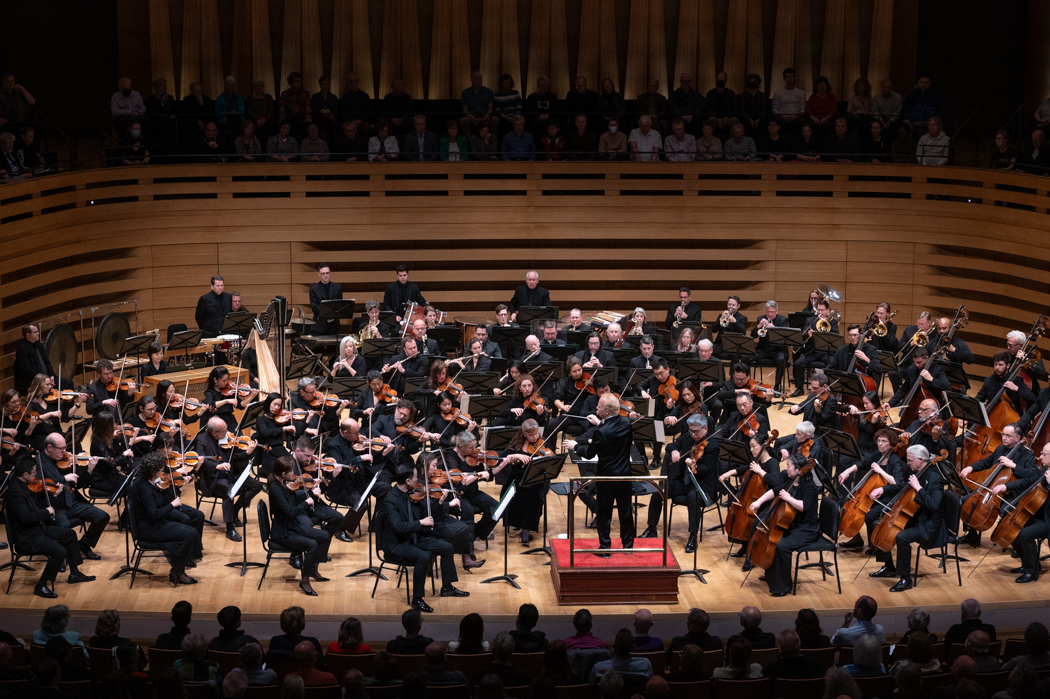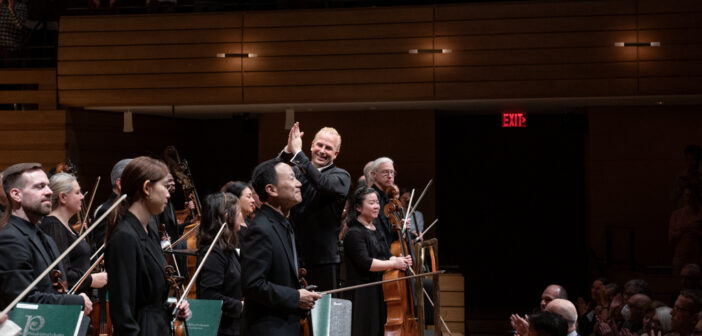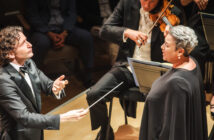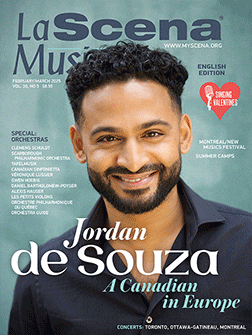The Philadelphia Orchestra tours all over the world, but this past Wednesday marked their first performance in Toronto under musical director Yannick Nézet-Séguin. The eagerly-awaited concert was sold out months in advance. Their interpretation of Rachmaninov’s second symphony was a near-definitive performance, surely leaving most attendees more than pleased with what they heard.
The Philadelphia Orchestra has been to Toronto before: I heard Eugene Ormandy perform Ein Heldenleben at Massey Hall in the late 1950s. Prior to that, Leopold Stokowski regularly brought the orchestra to Toronto to appear with the Toronto Mendelssohn Choir.
Nézet-Séguin has been the music director of the Philadelphia Orchestra for 12 years. He surely took great pride in bringing his orchestra to his native country. In addition to the Toronto concert, this tour made stops in Ottawa and Montreal.
It is well-known that Rachmaninov had a close association with the Philadelphia Orchestra as piano soloist, conductor, and composer, with many of his later works written for the orchestra. Nézet-Séguin is clearly mindful of this connection and has made the music of Rachmaninov part of the orchestra’s core repertoire: they have recorded all the composer’s works for piano and orchestra – with Daniil Trifonov – as well as nearly all of Rachmaninov’s orchestral music, including the second symphony. Last fall, Nézet-Séguin and the orchestra toured Europe with a series of all-Rachmaninov programs.
It was evident in their Toronto performance that both conductor and orchestra have spent many hours with this music: it seems part of their heart and soul. Their playing was exceptional, with infinite care taken in every phrase, and attention given to balance and texture. The string sound of the Philadelphia Orchestra is the stuff of legend, and hearing it live is surely one of life’s ultimate pleasures. And what can we say about clarinetist Ricardo Morales’s infinitely inflected sound in the slow movement of the symphony?

The Philadelphia Orchestra and Nézet-Séguin at Koerner Hall, courtesy of The Philadelphia Orchestra/Lisa Sakulensky
I attended the Bravo Vail! Festival last summer during the Philadelphia’s Orchestra’s annual weeklong residency there and was similarly impressed by Nézet-Séguin and the ensemble. Among the highlights there were a wonderful performance of Rachmaninov’s Symphonic Dances, and Morales’s astonishing performance of Weber’s Clarinet Quintet.
In Koerner Hall, the ease with which conductor and orchestra work together was particularly apparent. No need for big gestures or excessive cuing from the conductor. Instead, one man on the podium makes music together with 100 musicians: everyone contributes to the quality of the sound they produced, the sense of commitment within ensemble, and above all, their musicality.
In the first half of the concert, he and the orchestra continued their promotion of the music of Florence Price (1887-1953). In 1933, her Symphony No. 1 was played by Frederick Stock and the Chicago Symphony. At this time, Price became the first black woman to have her music played by a major orchestra. She went on to compose three other symphonies, which unfortunately did not attain the same level of recognition.
Her Symphony No. 2 was lost, and Symphony No. 4 (composed in 1945) was not performed until 2018. Price was never interested in the experimentation and increasing chromaticism of 20th century music, her compositional style is unabashedly lyrical. In all three of her symphonies, she includes a movement called “Jubal,” a new kind of scherzo movement based on African American dance melodies and rhythms.
As with Rachmaninov, Nézet-Séguin and the Philadelphians have the music of Florence Price in their bones. They program her music frequently, and have recorded all three of her symphonies. The Toronto performance of the Symphony No. 4 was exceptionally good. Whether or not Price’s music will stand the test of time remains to be seen, but after years of neglect it deserves to be heard. Performances of this quality will help assure Price a permanent place in American symphonic repertoire.
There are those who denigrate Rachmaninov, citing the romantic ardor of his melodies and the heart-on-sleeve passion. In a performance of this quality, however, the beauty of the music and the remarkable range of expression – from the depths of depression to great joy, which lingers in one’s memory – do justice to the composer’s passionate writing.
When I reviewed the Philadelphia Orchestra’s Deutsche Gramophone recording of Rachmaninov’s Symphony No. 2 last year, I confessed I was disappointed that the conductor had slowed down so much at the climactic end of the work’s last movement, instead of pressing ahead. Such was the case in the concert as well, but with the excitement of live performance, it seemed to matter less. In playing it this way, Nézet-Séguin was being true to the letter of the score.
Unfortunately, in moments Koerner Hall felt too small to do justice to the big sounds of Rachmaninov’s Symphony No. 2. While the strings and winds were fine at full volume but the brass turned hard-edged and shrill. This kind of program might have had more acoustic success in Roy Thomson Hall.
It was a special treat to see Nézet-Séguin conduct the celebrated Philadelphia Orchestra in Toronto. With any luck, this triumphant return to Toronto will inspire many more appearances up north.















